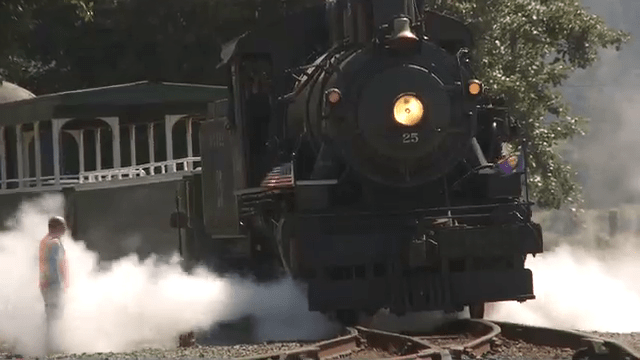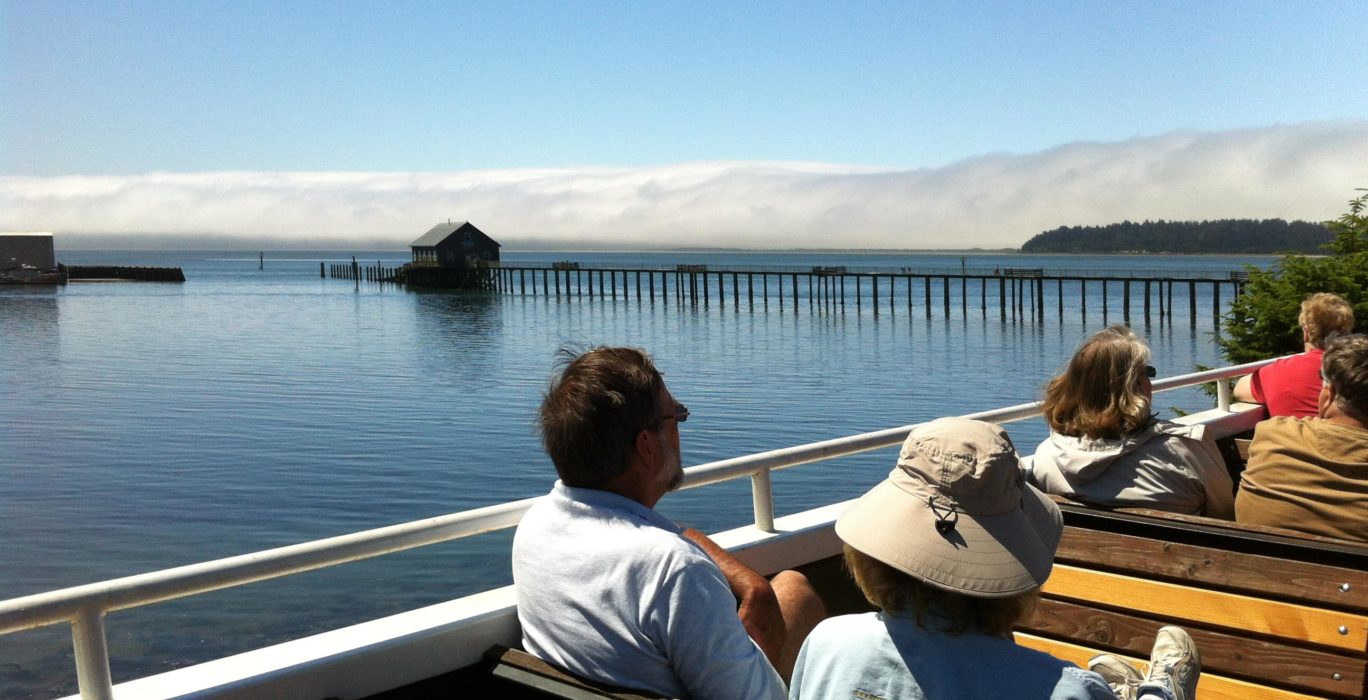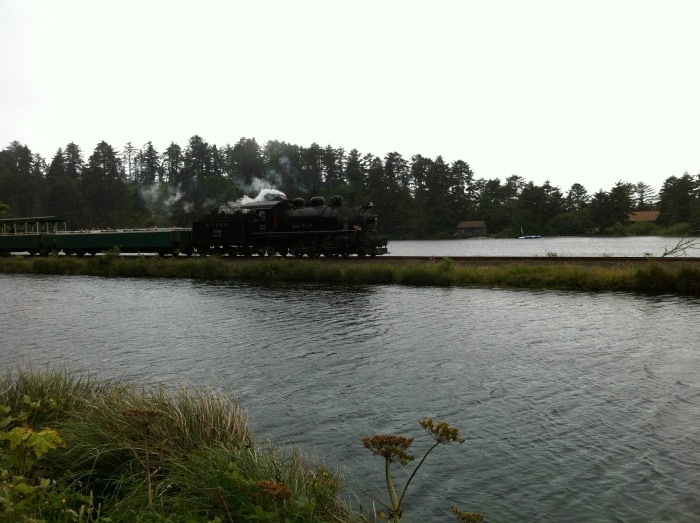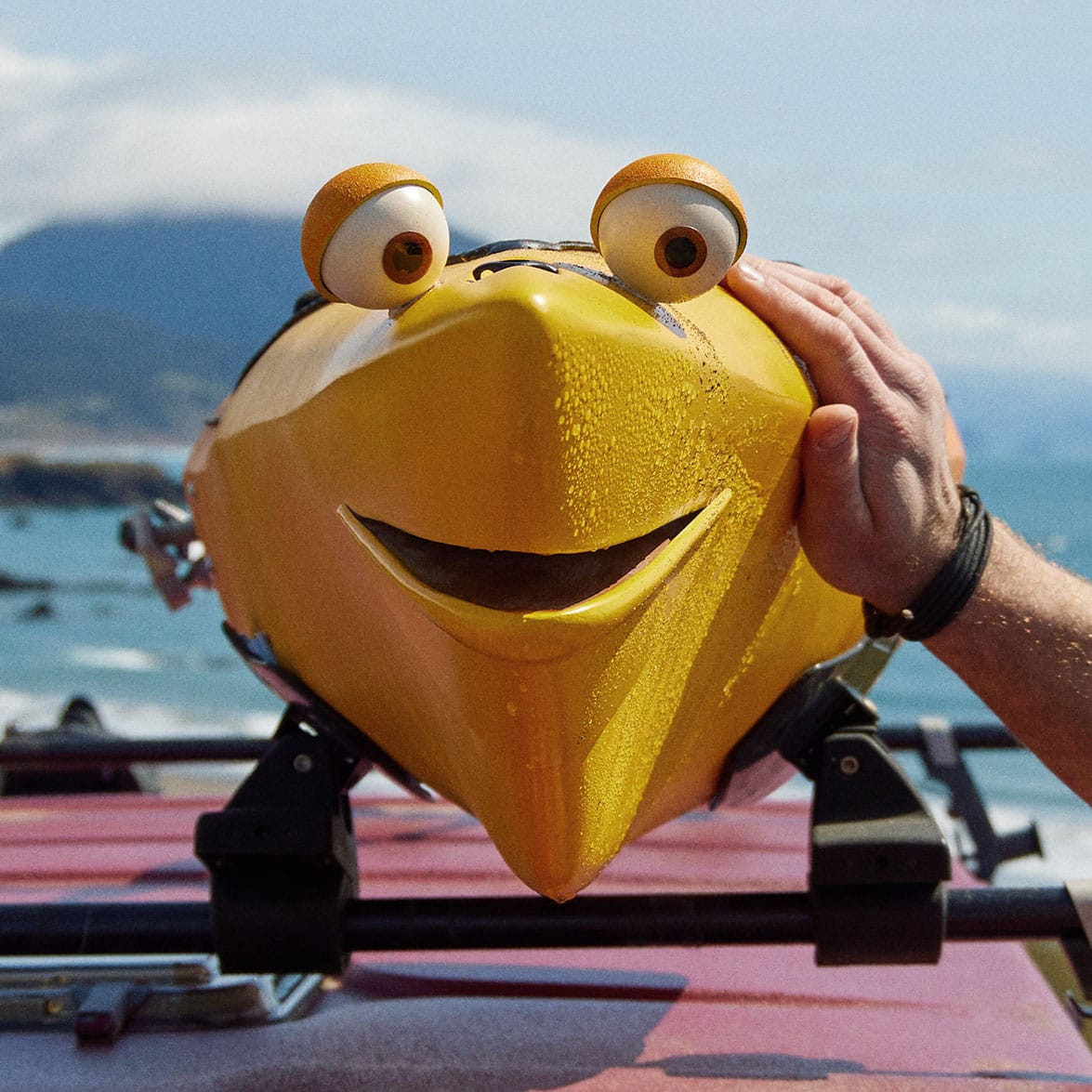It’s rare to combine an Oregon history lesson with outdoor recreation, but in Tillamook County you touch history by “riding the rails” on a unique steam engine train ride. In Garibaldi, the Oregon Coast Scenic Railroad connects passengers with recreation that reaches back more than a century.
Each morning, Engineer Scott Wickert preps the business end of the OCSR: a Prairie 262 steam engine that roars to life in billowy clouds of steam. The engine was built in 1925 and it burns recycled motor oil and it is rated to pull 29,000 pounds. “It’s like a big industrial furnace,” noted Wickert. “The firebox is surrounded by a water jacket and as it boils, the steam rises and moves through super heater units and then down into the cylinders to move the train.”
The railroad takes on passengers at the Garibaldi Depot each day for a 90 minute round trip ride along the coast. The steam engine pulls three passenger cars (plus the caboose) and that’s where you’ll find OCSR Conductor Tim Thompson. He is usually busy checking passengers and punching their tickets, and he’s been at it since 2003 when the OCSR began operation in Tillamook County.
The day was in 1912, when the first railroad arrived in Tillamook County from the Willamette Valley. It primarily hauled timber but it also brought Portland-area passengers to the beach. Tourists quickly fell in love with the sun, the surf and the chance to get away from it all, according to local historian Don Best. “There were no roads here, nothing but trails in this area,” said Best, a longtime resident whose grandfather arrived in Tillamook County in 1910. “You had to go by wagon up the beach line at low tide to get into this area back then. The train changed everything.”
Best added that a century ago, the railroad was the only way to reach Tillamook County’s gorgeous sandy beaches and access was convenient. “You could get on the train at 9:30 in Portland and be walking on Rockaway Beach at 2:30 in the afternoon. It was the most accessible beach on the Oregon Coast.”
People came by thousands and vacation developments were ready to meet them, boasting familiar sounding names like Manhattan Beach, Brighton Beach and Saltair. Unlike modern vacations that are measured by a few days of getting away from it all, a century ago most families would travel to Rockaway Beach and stay all summer.
There weren’t many houses in those early days, but camps with wooden tent frames that were lined up next to each other. People bought or brought canvas tents and set up their summer camp. Eventually lots were created and vacation cabins were built. These days, the OCSR runs three or four times a day along a three-mile stretch of track from Garibaldi to Rockaway Beach; at ten miles an hour, it is a pleasant cruise.
Visitor Ahne Oosterhof enjoyed the ride for its unique perspective. “It is a fun way to see things that you miss from the highway. It’s not very fast, but that’s kind of nice because it gives me more time to look around.”
Train conductor Thompson agreed and offered, “On a hot summer weekend in Portland, we are packed! Folks love the open cars with sunshine and cool breezes, while others choose to sit inside our fully restored Wilson River car and reflect on the history of the railroad. It’s a lot of fun for folks who’ve never experienced an old fashioned train ride and want to connect with Oregon’s past.”



